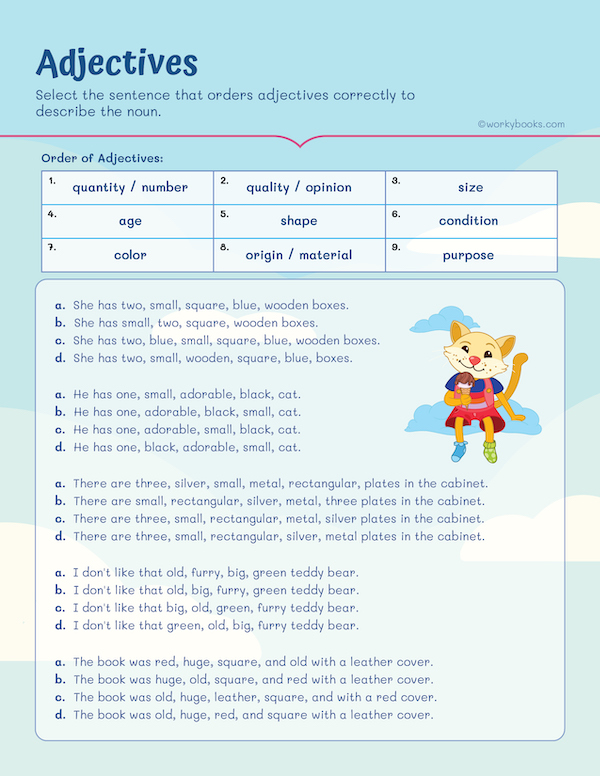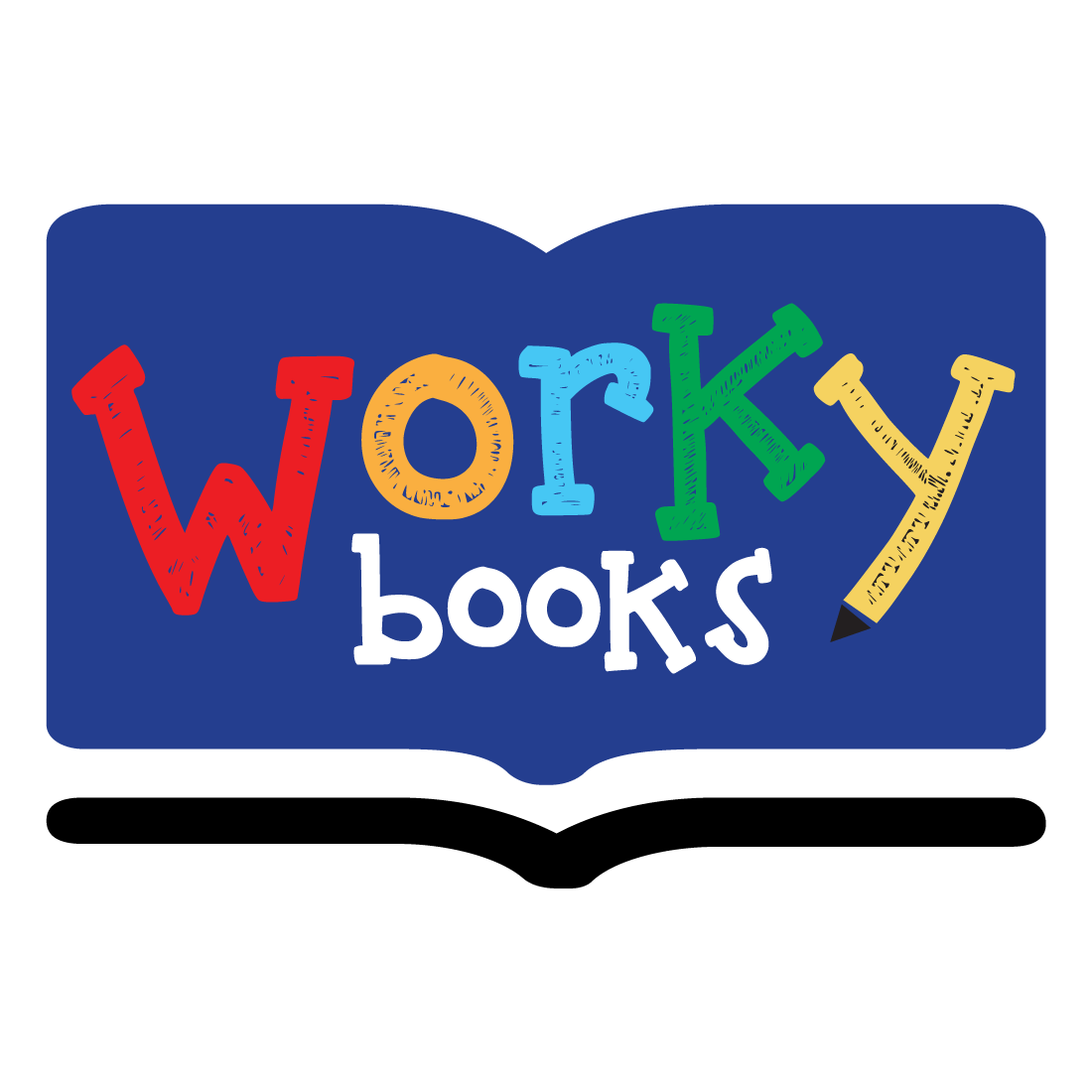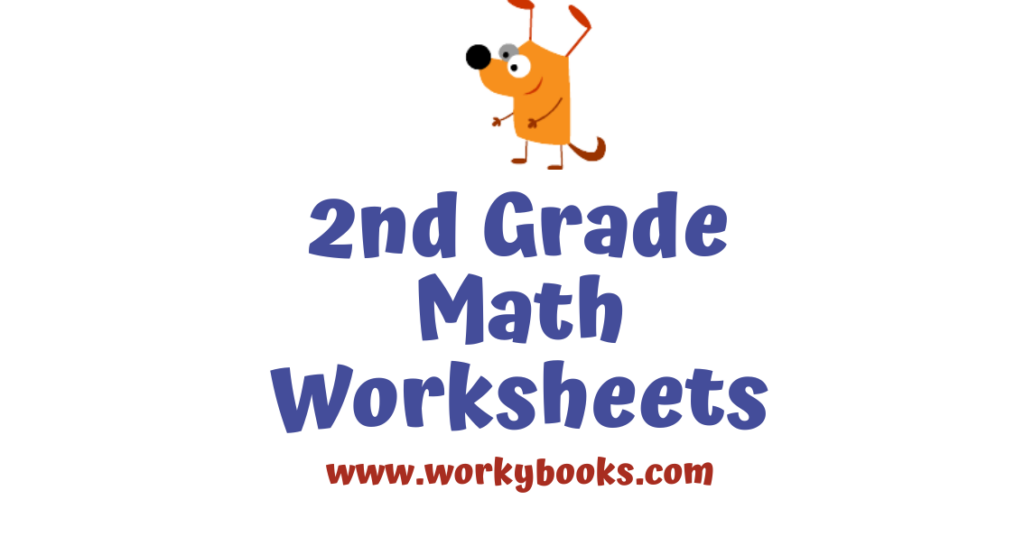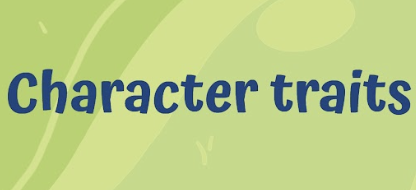Adjectives Worksheets for 4th Grade
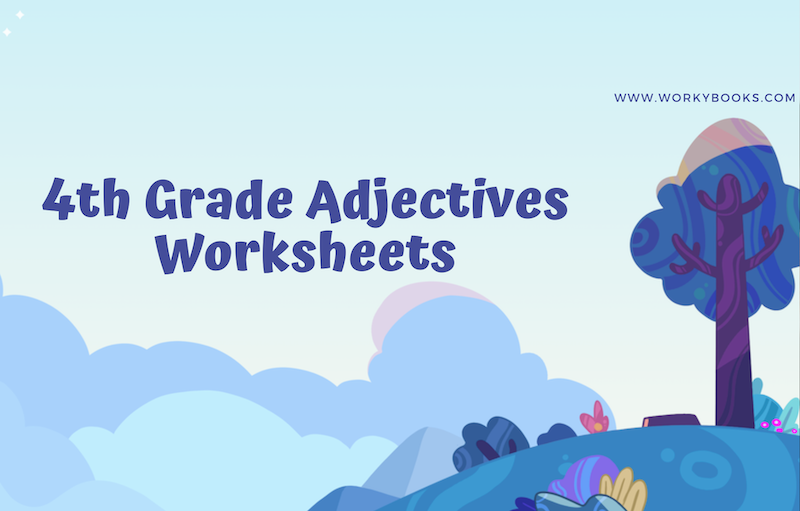
Adjectives are an essential part of speech that help students describe the world around them with precision and clarity. As fourth graders develop their writing skills, it’s crucial for them to understand how to use adjectives effectively. That’s where Workybooks’ 4th grade adjectives worksheets come in, providing targeted practice that aligns with Common Core State Standards (CCSS).
The specific standard addressed by these worksheets is CCSS.ELA-LITERACY.L.4.1.d, which states that students should “Order adjectives within sentences according to conventional patterns (e.g., a small red bag rather than a red small bag).” This might seem like a small detail, but it’s an important skill for students to master as they learn to communicate effectively through writing.
Understanding the Order of Adjectives
The order of adjectives in English can often feel natural to native speakers but can be quite challenging for learners. When multiple adjectives are used to describe a noun, they typically follow a specific order to sound natural. Here’s a more detailed look at each category in the suggested order:
| Quantity / Number: | Adjectives that Express How Many or How Much |
| Examples: | three, several, many, few, numerous |
| Example sentence: | She bought three large red balloons. |
| Quality / Opinion: | Adjectives that Give an Opinion or Describe a Quality |
| Examples: | beautiful, ugly, wonderful, horrible, interesting. |
| Example sentence: | It was a wonderful old house |
| Size: | Adjectives that Describe the Size of Something |
| Examples: | big, small, large, tiny, huge. |
| Example sentence: | They live in a small wooden cottage |
| Age: | Adjectives that Describe the Age of Something |
| Examples: | old, young, new, ancient, modern |
| Example sentence: | He drove a new red car. |
| Shape: | Adjectives that Describe the Shape of Something |
| Examples: | round, square, triangular, oval. |
| Example sentence: | She found a round antique table. |
| Condition: | Adjectives that Describe the State or Condition of Something |
| Examples: | clean, dirty, wet, dry, broken. |
| Example sentence: | He wore a clean white shirt. |
| Color: | Adjectives that Describe the Color of Something |
| Examples: | red, blue, green, yellow, black. |
| Example sentence: | She has blue sparkling eyes |
| Origin / Material: | Adjectives that Describe Where Something Comes from (Origin) or What it is Made of (Material) |
| Examples: | Italian, Japanese (origin); wooden, metallic (material). |
| Example sentence: | They bought a Japanese ceramic vase. |
| Purpose: | Adjectives that Describe What Something is Used for are Often Formed by Adding -ing to a Verb |
| Examples: | cooking (pan), sleeping (bag), shopping (mall). |
| Example sentence: | He bought a sleeping bag |
Full Example:
Using all categories together:
“She bought three (Quantity) beautiful (Opinion) large (Size) old (Age) round (Shape) wooden (Condition) red(Color) Japanese (Origin) serving (Purpose) trays.”
While not every noun will be described using all these categories, this example shows how adjectives fit into a natural order to describe a single noun comprehensively. Following this order helps ensure that descriptions are clear and sound natural.
Order of Adjectives 4th Grade Worksheet:
Targeted Practice Workybooks’ adjective worksheets provide ample opportunities for students to practice ordering adjectives correctly. The 4th Grade Adjectives Worksheets feature a variety of engaging exercises, such as:
- Reordering lists of adjectives to follow conventional patterns
- Identifying and correcting errors in adjective order within sentences
- Writing original sentences using multiple adjectives in the correct order
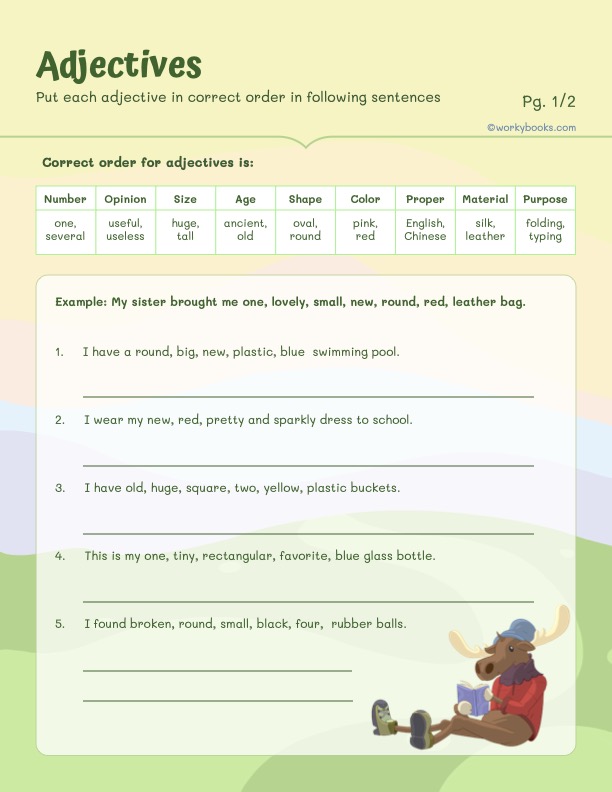
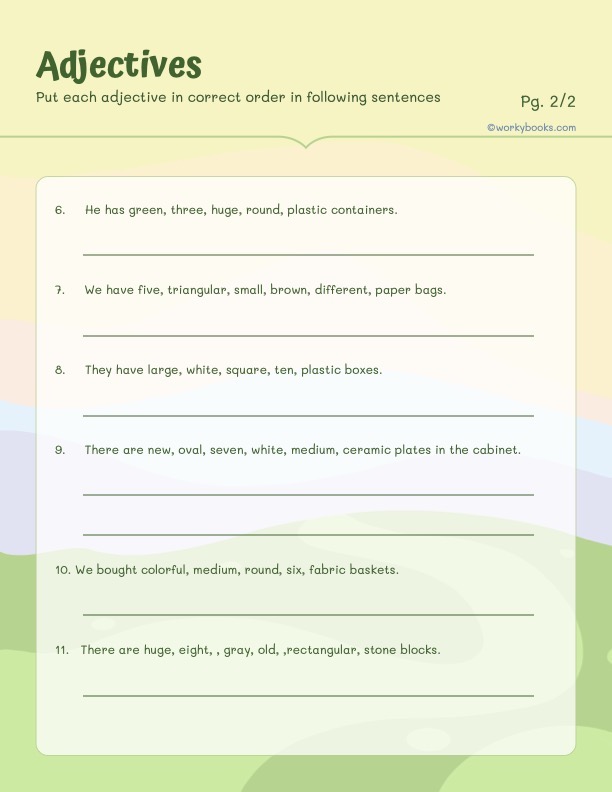
This worksheet provides students with the opportunity to practice and reinforce their understanding of the correct order of adjectives, enhancing their descriptive writing skills and adherence to standard grammatical conventions.
